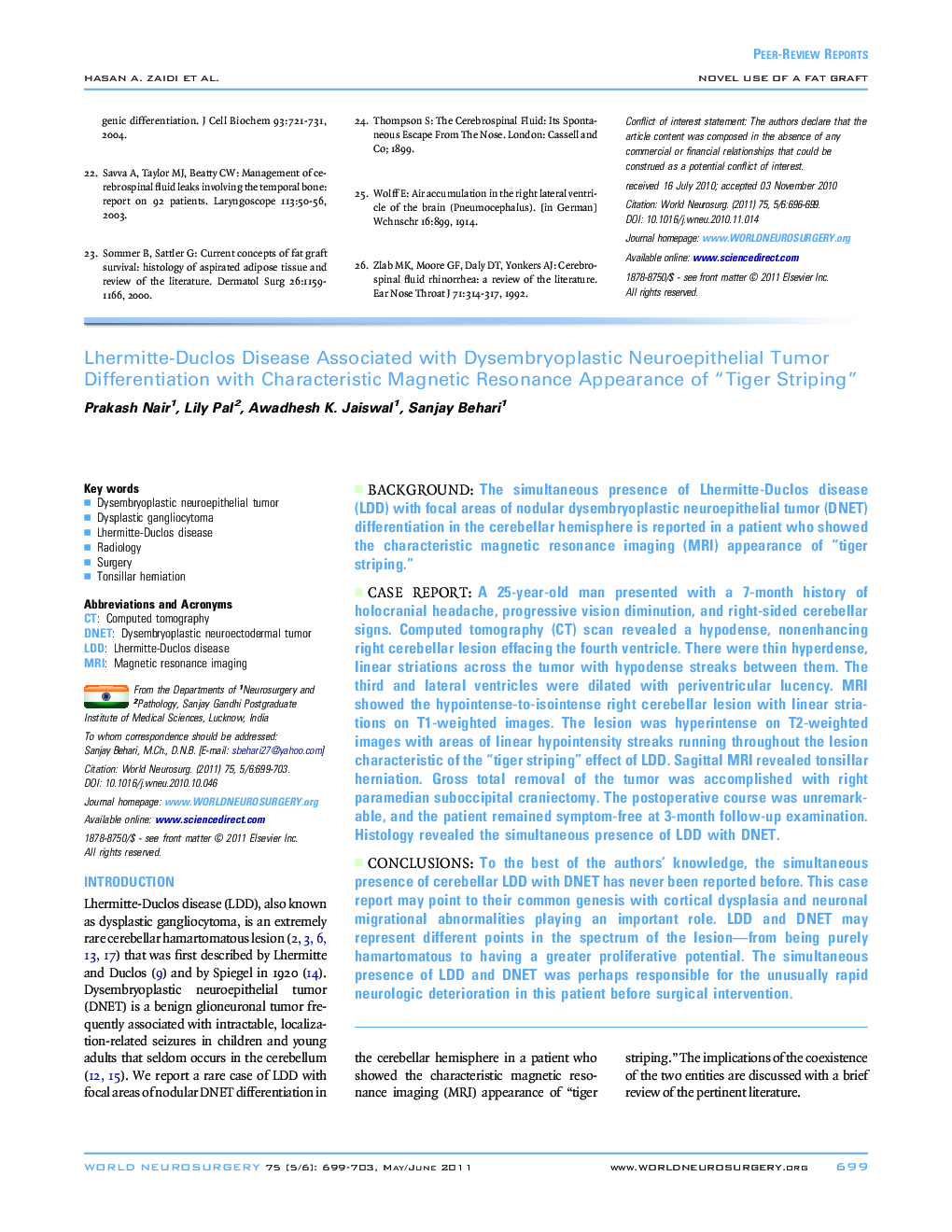| کد مقاله | کد نشریه | سال انتشار | مقاله انگلیسی | نسخه تمام متن |
|---|---|---|---|---|
| 3097284 | 1581486 | 2011 | 5 صفحه PDF | دانلود رایگان |

BackgroundThe simultaneous presence of Lhermitte-Duclos disease (LDD) with focal areas of nodular dysembryoplastic neuroepithelial tumor (DNET) differentiation in the cerebellar hemisphere is reported in a patient who showed the characteristic magnetic resonance imaging (MRI) appearance of “tiger striping.”Case ReportA 25-year-old man presented with a 7-month history of holocranial headache, progressive vision diminution, and right-sided cerebellar signs. Computed tomography (CT) scan revealed a hypodense, nonenhancing right cerebellar lesion effacing the fourth ventricle. There were thin hyperdense, linear striations across the tumor with hypodense streaks between them. The third and lateral ventricles were dilated with periventricular lucency. MRI showed the hypointense-to-isointense right cerebellar lesion with linear striations on T1-weighted images. The lesion was hyperintense on T2-weighted images with areas of linear hypointensity streaks running throughout the lesion characteristic of the “tiger striping” effect of LDD. Sagittal MRI revealed tonsillar herniation. Gross total removal of the tumor was accomplished with right paramedian suboccipital craniectomy. The postoperative course was unremarkable, and the patient remained symptom-free at 3-month follow-up examination. Histology revealed the simultaneous presence of LDD with DNET.ConclusionsTo the best of the authors' knowledge, the simultaneous presence of cerebellar LDD with DNET has never been reported before. This case report may point to their common genesis with cortical dysplasia and neuronal migrational abnormalities playing an important role. LDD and DNET may represent different points in the spectrum of the lesion—from being purely hamartomatous to having a greater proliferative potential. The simultaneous presence of LDD and DNET was perhaps responsible for the unusually rapid neurologic deterioration in this patient before surgical intervention.
Journal: World Neurosurgery - Volume 75, Issues 5–6, May–June 2011, Pages 699–703